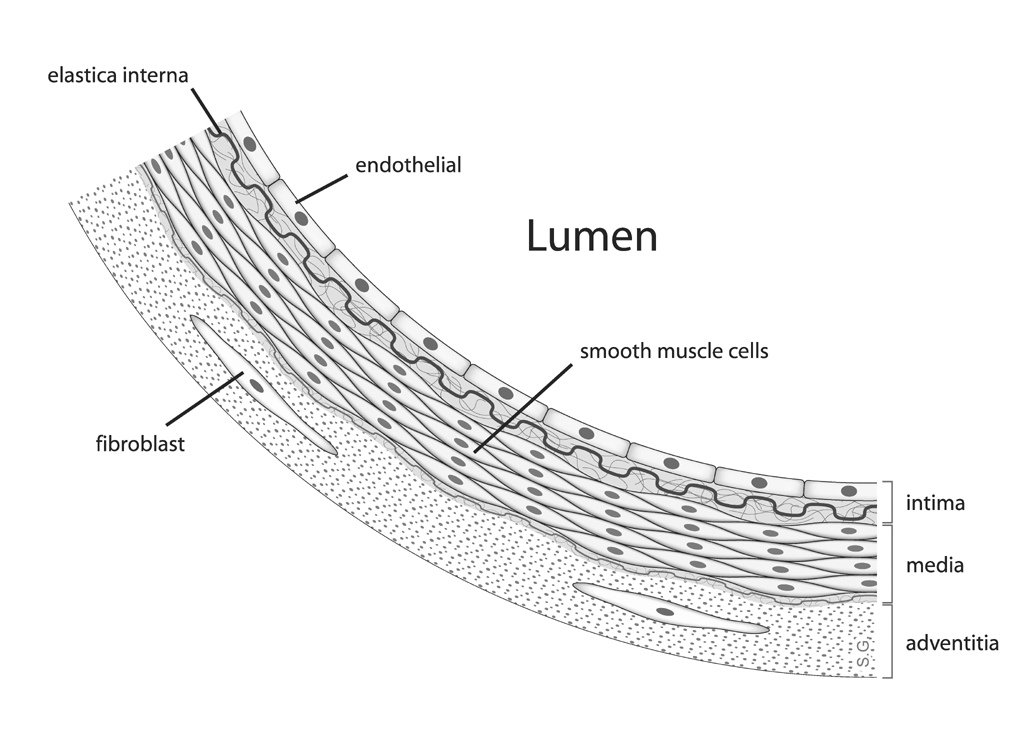Endothelium

Template:WikiDoc Cardiology News Editor-In-Chief: C. Michael Gibson, M.S., M.D. [1]
The endothelium is the thin layer of cells that line the interior surface of blood vessels, forming an interface between circulating blood in the lumen and the rest of the vessel wall. Endothelial cells line the entire circulatory system, from the heart to the smallest capillary. These cells reduce friction of the flow of blood allowing the fluid to be pumped further.
Endothelial tissue is a specialized type of epithelium tissue (one of the four types of biological tissue in animals). More specifically, it is simple squamous epithelium.
Endothelium of the interior surfaces of the heart chambers are called endocardium. Both blood and lymphatic capillaries are composed of a single layer of endothelial cells.
Function
Endothelial cells are involved in many aspects of vascular biology, including:
- vasoconstriction and vasodilation, and hence the control of blood pressure
- blood clotting (thrombosis & fibrinolysis)
- atherosclerosis
- formation of new blood vessels (angiogenesis)
- inflammation and swelling (oedema)
Endothelial cells also control the passage of materials — and the transit of white blood cells — into and out of the bloodstream.
In some organs, there are highly differentiated endothelial cells to perform specialized 'filtering' functions. Examples of such unique endothelial structures include the renal glomerulus and the blood-brain barrier.
Pathology
Endothelial dysfunction, or the loss of proper endothelial function, is a hallmark for vascular diseases, and often leads to atherosclerosis. This is very common in patients with diabetes mellitus, hypertension or other chronic pathophysiological conditions. One of the main mechanisms of endothelial dysfunction is the diminishing of nitric oxide, often due to high levels of asymmetric dimethylarginine, which interfere with the normal L-arginine-stimulated nitric oxide synthesis.
See also
- Endothelium-derived relaxing factor (EDRF)
- Robert F. Furchgott (1998 Nobel prize for discovery of EDRF)
- Caveolae
- Weibel-Palade bodies
- Endothelial microparticles
- Endothelial progenitor cells
- Endocardium
- Tunica intima
- Apelin
External links
- Template:EMedicineDictionary
- Template:UCDavisOrganology - "Capillaries, non-fenestrated (EM, Low)"
- Histology image: 21402ooa – Histology Learning System at Boston University
References
- Molecular Biology of the CELL, 4th edition, Alberts et al., 2002
de:Endothel
eo:Endotelio
it:Tessuto endoteliale
nl:Endotheel
sv:Endotel
sr:ендотел